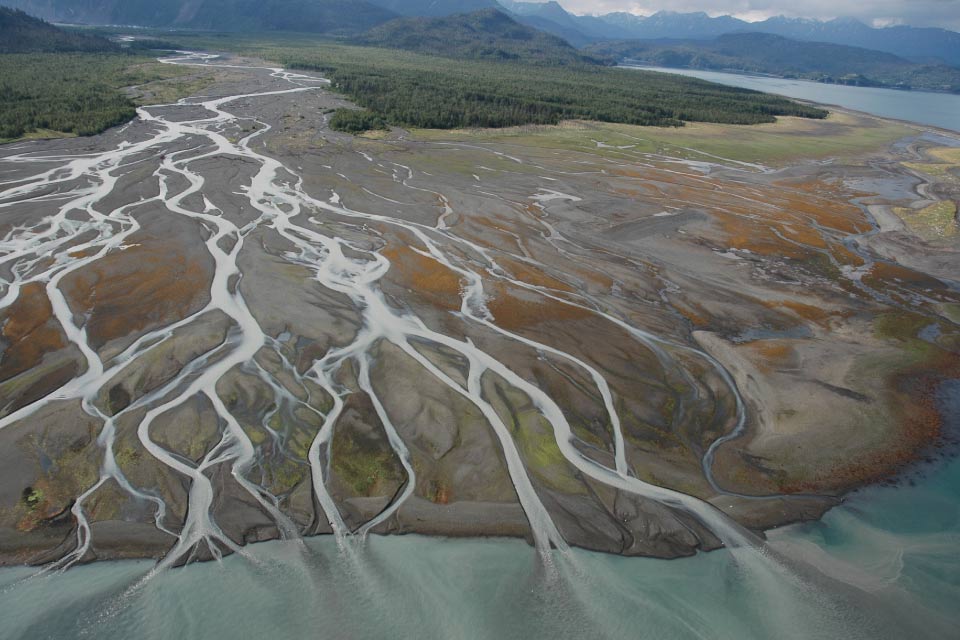Why is the ocean salty, but rivers flowing into it are not?
The saltiness of the ocean is the result of several natural influences and processes; water from rivers entering the ocean is just one of these factors.

Braided river delta at low tide Lower Cook Inlet Kachemak Bay Alaska. Credit: Alaska Shorezone.
In the beginning, the primeval seas were probably only slightly salty. But over time, as rain fell to the Earth and ran over the land, breaking up rocks and transporting their minerals to the ocean, the ocean has become saltier.
Rain replenishes freshwater in rivers and streams, so they don’t taste salty. However, the water in the ocean collects all of the salt and minerals from all of the rivers that flow into it.
It is estimated that the rivers and streams flowing from the United States alone discharge 225 million tons of dissolved solids and 513 million tons of suspended sediment annually to the ocean. Throughout the world, rivers carry an estimated four billion tons of dissolved salts to the ocean annually.
About the same tonnage of salt from ocean water probably is deposited as sediment on the ocean bottom and thus, yearly gains may offset yearly losses. In other words, the ocean today probably has a balanced salt input and output (and so the ocean is no longer getting saltier).
Social